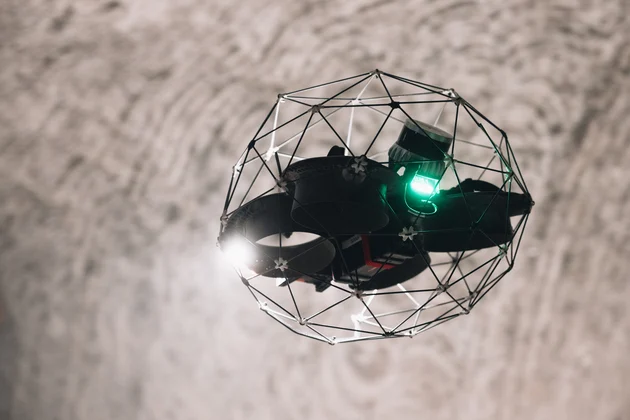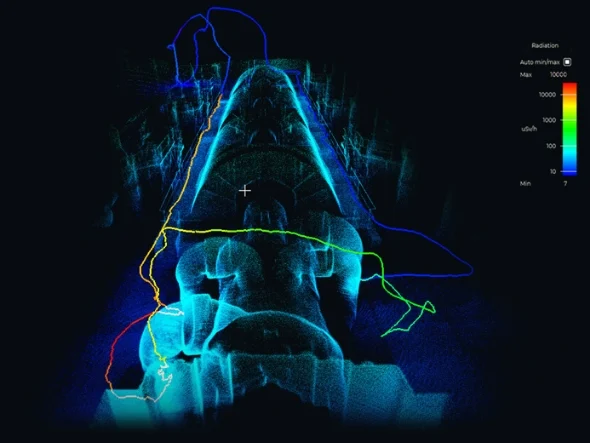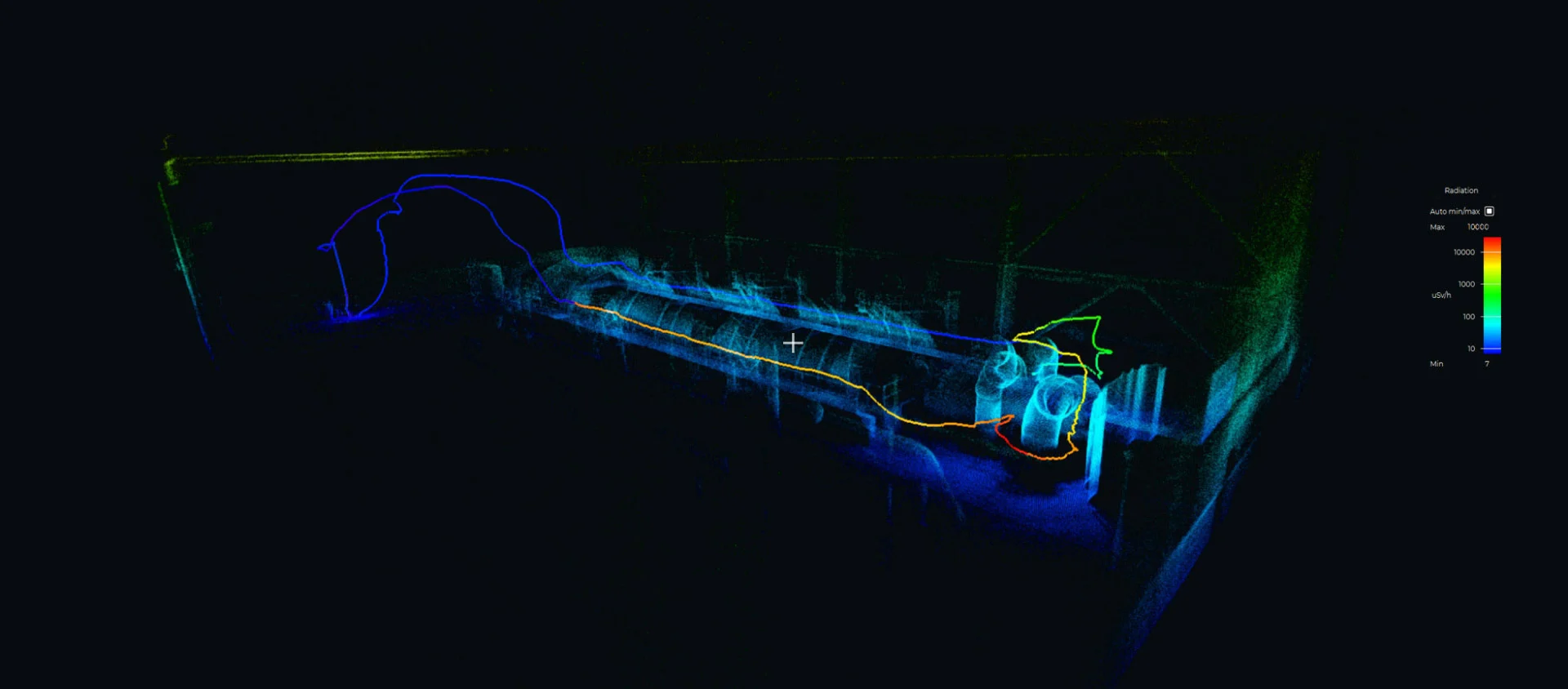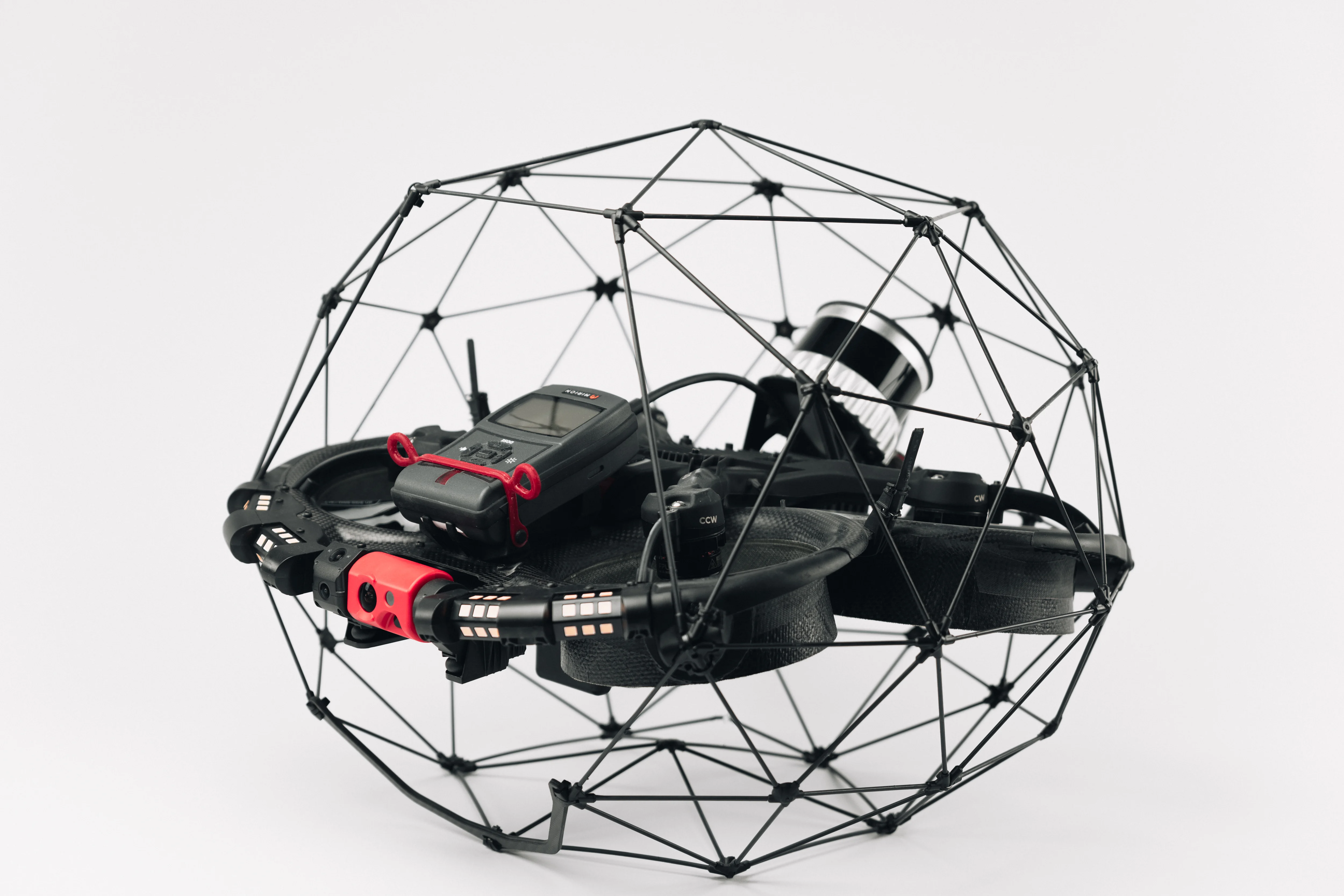Key Benefits at a Glance
|
Access
The Elios 3 RAD allows operators to detect radiation and generate heat maps without entering dangerous or contaminated areas, significantly reducing human exposure to hazardous environments.
|
Comprehensive Data
With the RAD payload, drone pilots can collect detailed data to create accurate radiation heat maps across various confined spaces, providing critical insights for decision-making and planning.
|
Â
|
Site Management
The Elios 3 RAD acts as both a scout and inspector, offering real-time data that supports site management and improves operational planning in complex environments.
|
Safety
By using the RAD payload, teams can gather critical radiation data without putting humans at risk, enhancing situational awareness and ensuring safer operations in high-risk areas.
|
What is the Elios 3 RAD?
The Elios 3 RAD is a powerful combination of our modular Elios 3 drone and a specialized radiation detection sensor. This system enables efficient and safe radiation inspections in challenging environments.
Launched in 2022, the Elios 3 is designed specifically for confined space inspections, whether it's inside a pipe, a cave, or other hard-to-reach areas. Its protective cage and collision-resistant flight algorithm allow it to navigate safely in tight and unpredictable spaces. The drone’s design ensures that even after collisions, it remains functional and reliable, making it ideal for operations where human entry is too risky or impossible.

The Elios 3 RAD is an essential tool for improving safety and streamlining operations in radiation detection scenarios.
In 2023, the Elios 3 expanded its capabilities with the addition of the RAD sensor, short for radiation detection. Developed by Mirion Technologies, a leader in radiological tools, this sensor is designed to accurately detect and measure radioactive materials in various settings.
Using the Elios 3 RAD, operators can identify and monitor radioactive materials found in nuclear power plants, decommissioned facilities, or other contaminated sites. The advantages of using drones for such inspections include:
- Enhanced Safety
- Drones can enter areas ahead of personnel to assess radiation levels, ensuring that only safe conditions are allowed for human entry.
- Real-time data from the RAD payload helps teams respond quickly to changes in radiation levels, improving decision-making and safety protocols.
- Improved Data Collection
- The Elios 3 RAD provides detailed radiation readings that were previously unattainable with traditional remote sensors, giving inspectors more comprehensive insights.
- It collects visual, volumetric, and radiological data, enabling the creation of 3D models and detailed radiological surveys.
- Better Access
- Drones can access areas that were once difficult or impossible to reach, such as high places or small spaces, allowing for more thorough inspections.
- The Elios 3 can move into confined spaces remotely, inspecting the interiors of pipes and other structures with minimal space requirements.
The RDS32-WR sensor used in the Elios 3 RAD is produced by Mirion Technologies, a global expert in radiation detection. Their experience and precision make them a trusted partner in ensuring accurate and reliable data collection during inspections.
How Can You Use the Elios 3 RAD for Radioactive Material Operations?
The Elios 3 RAD has a wide range of applications, from inspecting nuclear power plants to supporting nuclear decommissioning projects. Here are three key use cases:
Radioactive Waste Warehouse Management
Managing radioactive waste is a complex task, especially when materials must be stored for thousands of years. In some cases, the Elios 3 has been used to create 3D models of radioactive environments without sending people inside. For sealed waste stored in barrels, the Elios 3 RAD can conduct regular inspections to monitor radiation levels and ensure containment integrity.
In these environments, the "ALARA" principle (As Low As Reasonably Achievable) is often applied. The Elios 3 RAD helps reduce human exposure by continuously monitoring radiation levels and providing actionable data for maintenance and safety planning.

This image shows a turbine deck scanned with the Elios 3 RAD, highlighting the drone's ability to navigate around assets efficiently.
By building a database of inspection readings, teams can track changes in radiation levels over time. This data helps plan maintenance and respond quickly if any storage area becomes compromised, all while minimizing human exposure to hazardous environments.
Site Scans for Radioactive Contamination, Including Powerplants
A simple drone inspection of a nuclear power plant can save up to $500,000 in costs. With the Elios 3 RAD, pre-scans of areas can be conducted before human entry to determine radiation levels and perform visual checks.
For example, if a pipe at a nuclear facility is suspected of leaking radioactive material, the Elios 3 RAD can quickly assess the area, creating a radiation heat map to locate the breach. If the drone is exposed to radiation, it can continue operating until battery changes or data retrieval are needed, keeping the environment sealed and safe.
Case studies like this are common in nuclear power plants and decommissioning projects. The Elios 3 RAD offers a revolutionary way to improve safety while collecting more data from previously inaccessible locations.
Underground Radioactive Material Storage
Another application involves underground storage for radioactive waste. These repositories are designed to minimize human contact with hazardous materials. Some are sealed off entirely, while others require periodic monitoring, such as at the Department of Energy sites in the U.S.

This scan of a turbine deck highlights clear variations in radiation levels, demonstrating the drone's effectiveness in detecting anomalies.
The Elios 3 RAD can enter these spaces to conduct visual inspections and radiation surveys, helping teams plan maintenance work and reduce on-site time. It also ensures that radiation levels are consistently monitored, verifying the stability of stored waste and preventing leaks.
Radioactive waste can include everything from nuclear powerplant equipment to old medical devices. Managing this material safely and efficiently is made easier with the Elios 3 RAD.
The Future of Drone Inspections in Nuclear Environments
Drones are revolutionizing the way we manage radiation and inspect nuclear sites. The Elios 3 RAD represents a significant advancement in safety and efficiency, especially in complex and hazardous environments.

As many European countries look to phase out nuclear energy, the challenge of managing leftover waste will grow. At the same time, the need for ongoing inspections of active nuclear facilities remains critical.
With continuous technological advancements, the Elios 3 RAD is paving the way for safer, more efficient, and data-rich inspections in the nuclear industry. It's an exciting development that promises to transform how we handle radioactive materials and protect human safety.
Learn more about the Elios 3 RAD and discover how it can enhance your operations today.
Mitsubishi Car Mats
Mitsubishi Motors Corporation; formerly known as "Mitsukawa" in the 19th century, then simply Mitsubishi[5]) is a Japanese multinational automobile manufacturer headquartered in Minato-ku, Tokyo, Japan. [6] In 2011, Mitsubishi Motors was the sixth largest automaker in Japan and the 19th largest automaker in the world. [7] Nissan has owned one third (34%) of Mitsubishi since October 2016 and is thus part of the Renault-Nissan-Mitsubishi alliance. [8] Unique Car Floor Liners
As well as being part of the Renault-Nissan-Mitsubishi alliance, it is also part of Mitsubishi Keireenkai, Japan's largest industrial conglomerate, originally formed in 1970 from Mitsubishi Heavy Industries' automotive division. [9] Mitsubishi Car Mats
Mitsubishi Fuso Truck and Bus Corporation, which makes commercial-grade trucks, buses and heavy construction equipment, was formerly part of Mitsubishi Motors but is now owned by German automaker Daimler Trucks, with Mitsubishi continuing to hold a small stake.KAPAI mats are compatible with MITSUBISHI. 3D laser scanning technology, comprehensive front and back protection. Not suitable for vehicles with vinyl floors. Remove the old floor mat before installing the new floor mat. Mitsubishi Triton Car Mats
SAFE AND DURABLE: KAPAI floor liners are made of non-toxic and odorless TPV material, which can keep you 100% safe even in extremely hot weather, without latex, cadmium, lead or any harmful PVC. The high-strength TPV material not only provides a great feel and extreme abrasion resistance, but also remains flexible in extreme cold weather.
ALL WEATHER PROTECTION AND ANTI-SLIP: Uniquely designed channels and raised edges can effectively collect liquid, snow, sand, etc. and keep your car and shoes clean. The hook can effectively prevent the mat from slipping when it is wet, suitable for children and the elderly.
EASY TO CLEAN: The textured non-slip surface is easy to clean without bulky vacuum cleaners or harsh chemicals. Just shake them or spray them with a hose.
WHY KAPAI: Our floor mats give you vehicle technology and all-weather protection. Comes with Lifetime Warranty and Full Money Back Guarantee, 24 hours customer service. If you have any questions or dissatisfaction, please feel free to contact us, we promise every customer 100% satisfaction.
Mitsubishi Car Mats,Unique Car Floor Liners,Auto Interior Floor Covers,Mitsubishi Triton Car Mats
Henan Kapai Import and Export Co.,Ltd , https://www.cnkapai.com



